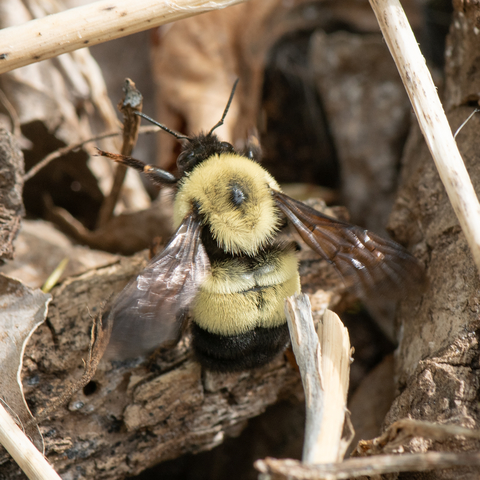There is much to celebrate about pollinators. Pollinators are responsible for roughly one out of every three bites of food we eat, being particularly important for the production of many nutrient-dense foods, including fruits and nuts.
Beyond our plates, roughly 80% of plants rely on pollinators to reproduce. These plants in turn support countless animals, stabilize soils and filter water.
A lot of the things we rely on can be traced back to tiny, winged insects moving from flower to flower gathering food for themselves and, in the process, making the connections that create the world as we know it.
Sustainability through mutual support
In addition to celebrating pollinators for their vital role in plant reproduction, people have the opportunity to learn important lessons about mutual support and diversity in our world from looking at pollinators. Pollinators and plants mutually support each other, with plants providing pollinators with the food they need to survive, and pollinators providing the vital service of moving pollen from anther to stigma to enable plant reproduction.
People have a long history of turning natural resources into capital, using that capital to put one species, one culture, one sex above others to gain more capital and control, and neglecting to take steps to put support back into the system. For example, much of our food production system lacks mutual support with the environment and with people. In many farming systems, nutrients are removed from the soil without being replaced and beneficial insects are often killed along with the pests.
Historically, it has been more difficult for African-American farmers to access federal support. We could look at the mutual support pollinators and plants provide each other as a model for how we approach food production. This could lead to a priority for sustainable food production and equal access to opportunities.
Strength from diversity
Another notable characteristic of pollinators is their diversity. Both flowering plants and the pollinators they rely on are highly diverse groups, with over 300,000 different pollinator-dependent plant species and over 200,000 animals that act as pollinators. This diversity provides strength to pollination systems and beauty to the world through a wide variety of plant and pollinator forms. Embracing our human diversity can likewise provide us with strength and beauty through different cultures, abilities and understandings of the world.
These lessons on mutual support and diversity can loop back to help pollinators and our fellow humans. We can all examine the choices we make and the effects and sustainability of those choices.
Unfortunately, many human choices for many years have contributed to pollinator declines and unequal impacts on people through habitat loss, pesticide use and climate change.
While some pollinators are able to take advantage of human-altered systems, many others are pushed to the edges of their former ranges, have drastically reduced numbers, and some species are likely to already be extinct. Likewise, some people thrive in our current system while others are deprived of economic opportunities, bear the brunt of exposure to pesticides and other pollutants, and are directly impacted by extreme weather caused by climate change.
Steps to support pollinators (and ourselves!)
You can support pollinators and move towards a more equitable world for people by using clean energy like solar and wind, buying food from farmers that practice sustainable agriculture, and buying products from independent, local businesses. Here are some additional steps to give an extra boost to pollinators.
- Plant diverse native flowers, shrubs, and trees that bloom from April to September, and keep them free of pesticides.
- Create messy, undisturbed spaces (piles of sticks or leaves) that can give pollinators safe places to live.
- Tell your friends, neighbors, and co-workers about the importance of pollinators and what they can do to help.
Pollinators are not just the glue holding our food system together, or just the key connectors between the plant and animal world. Pollinators could help us appreciate and support our connections to the diversity of the natural world and each other.
While we celebrate pollinators, let’s remember not just what they do for us, but how we can model their mutually supporting connections with the environment in our human connections with the environment and each other.
Ollerton, J., Winfree, R. and Tarrant, S. (2011), How many flowering plants are pollinated by animals? Oikos, 120: 321-326. https://doi.org/10.1111/j.1600-0706.2010.18644.x
Berenbaum, M. "Committee on the Status of Pollinators in North America," in Status of Pollinators in North America, Washington, DC: The National Academies Press, 2007.


